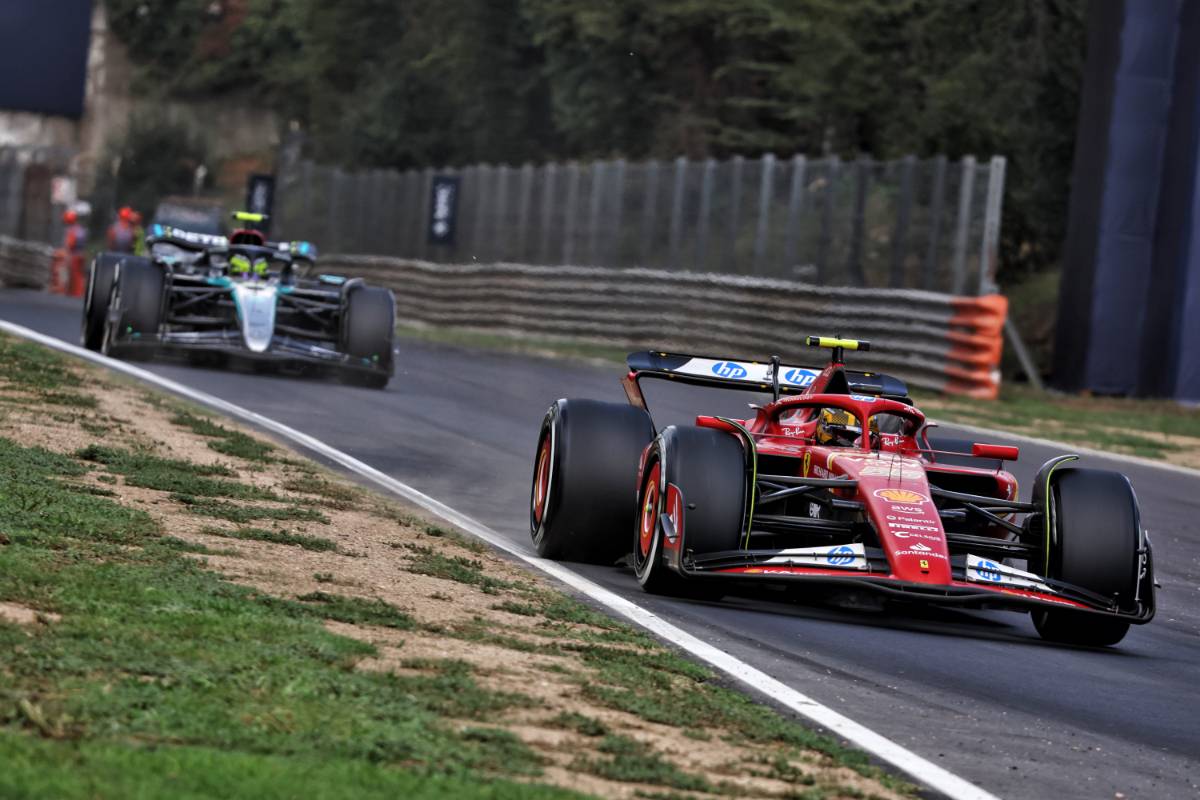
Ferrari team principal Fred Vasseur has highlighted rival teams' controversial use of flexible wings as a key factor in the fierce fight for the 2024 Formula 1 season.
Over the past summer, the Italian team, together with Red Bull, requested clarification from the FIA regarding suspected flexing wings used by McLaren and Mercedes.
The FIA later installed surveillance cameras at the Belgian Grand Prix, but ultimately deemed the designs legal.
Additionally, Formula 1's governing body has not introduced new testing protocols for the 2025 season, a situation which has frustrated Vasseur.
Asked about the impact of flexible wings on the championship, the Frenchman replied: “I think so, yes”.
Vasseur then clarified the difficulties faced by Ferrari in reacting to this situation, hampered by budget cap regulations and the time required for the FIA's assessment.
“I'm a little frustrated by this, because it's a performance issue, and we're waiting two months to find out if it's legal or not,” the Scuderia chief explained, as quoted by Motorsport.com.
“With the budget cap, you always have to keep that in mind. This means you need to be efficient with your budget. »
“If you start developing something and in the end it turns out to be canceled, you burn 600,000 euros. »
He also highlighted the impact on development resources.
“We had discussed with the Red Bull story two years ago, it's not because you burn half a million that you have 150 million budget. »
“It's half a million out of three or four million development, because you have your people, your racing fees, all that and at the end you have development, and you have X million for development. »
“But it’s a small X, and if you burn half a million for nothing, you can’t spend it anywhere else.” This is where, for me, the situation really crossed the line. »
Monza margins: small gains for a big difference
Vasseur highlighted the significant performance gains that a slight dip can offer, especially in a season as competitive as 2024, citing the tight margins seen at Monza as an example.
“It is true that the closer the competition, the more attention we will pay to details,” he said.
“I'm not sure that when there were six tenths between the cars we paid so much attention to detail. »
“But when you have races like Monza, where four or five cars are within a tenth, if you have a flexible wing it can make a huge difference. »

He linked the flexible fin debate to the current regulatory environment and increased competitiveness in the sport.
“I think it's more a consequence of the fact that, perhaps, we have strict regulations and it's not easy to develop, but also that the championship is getting tighter and tighter,” he said. commented Vasseur.
When asked if the delay in implementing their own flexible fin had a bigger impact than their update in Spain which didn't work, Vasseur offered a nuanced perspective.
” I don't know [si ne pas avoir d’aileron flexible a coûté plus cher que le plancher] because you can't go back on the season. It's not the same approach. »
“One is something we knew about and are a little late in deciding to go for. The other is a development, and we didn't expect to have this problem. »
“With the wing, it’s just a mathematical approach. »
As the season ended, Vasseur's frustration underlined a more general truth: in a championship as tight as that of 2024, even the smallest dip can tip the balance.
Follow all the F1 news on X et Facebook





